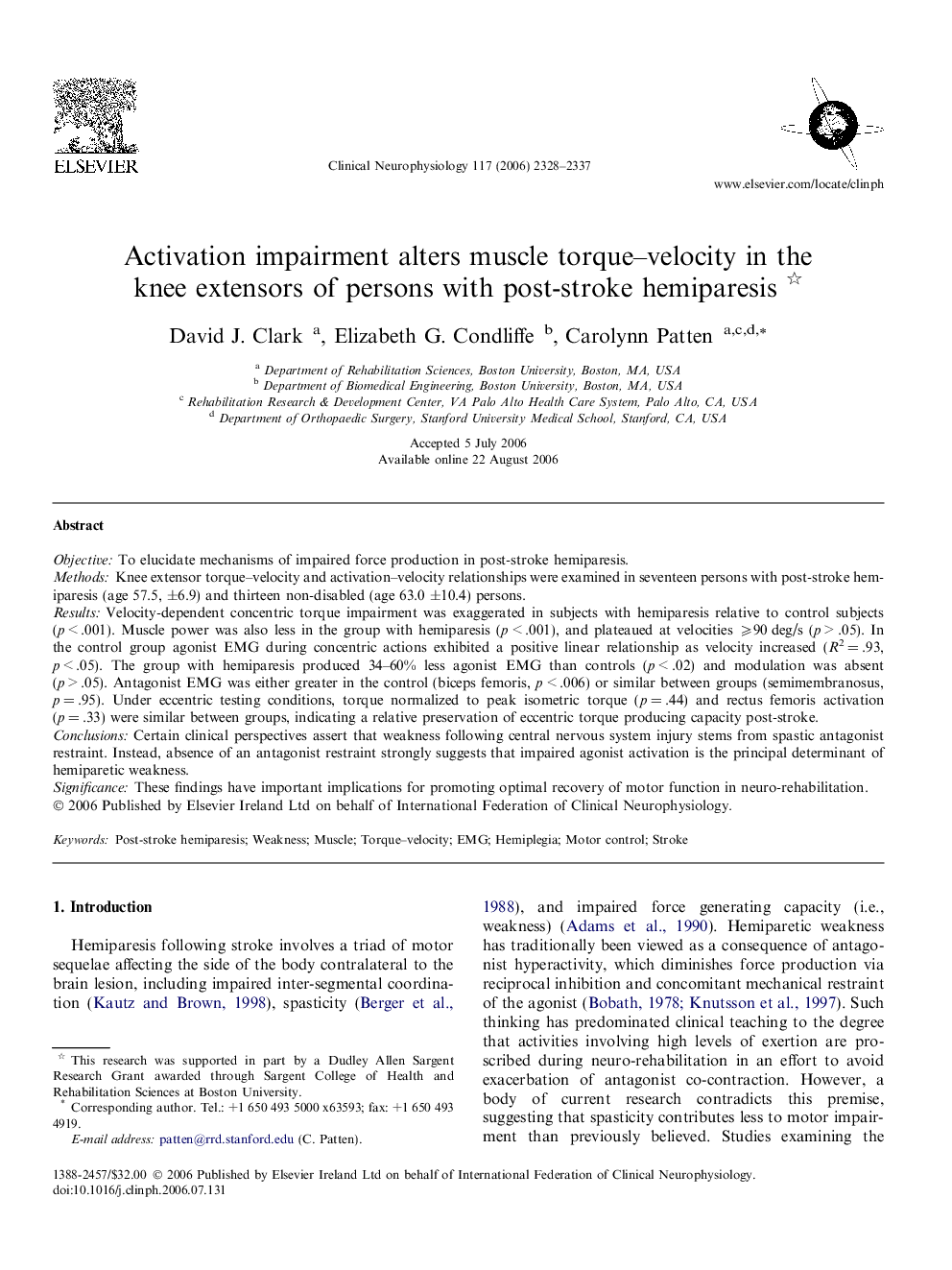| Article ID | Journal | Published Year | Pages | File Type |
|---|---|---|---|---|
| 3047684 | Clinical Neurophysiology | 2006 | 10 Pages |
ObjectiveTo elucidate mechanisms of impaired force production in post-stroke hemiparesis.MethodsKnee extensor torque–velocity and activation–velocity relationships were examined in seventeen persons with post-stroke hemiparesis (age 57.5, ±6.9) and thirteen non-disabled (age 63.0 ±10.4) persons.ResultsVelocity-dependent concentric torque impairment was exaggerated in subjects with hemiparesis relative to control subjects (p < .001). Muscle power was also less in the group with hemiparesis (p < .001), and plateaued at velocities ⩾90 deg/s (p > .05). In the control group agonist EMG during concentric actions exhibited a positive linear relationship as velocity increased (R2 = .93, p < .05). The group with hemiparesis produced 34–60% less agonist EMG than controls (p < .02) and modulation was absent (p > .05). Antagonist EMG was either greater in the control (biceps femoris, p < .006) or similar between groups (semimembranosus, p = .95). Under eccentric testing conditions, torque normalized to peak isometric torque (p = .44) and rectus femoris activation (p = .33) were similar between groups, indicating a relative preservation of eccentric torque producing capacity post-stroke.ConclusionsCertain clinical perspectives assert that weakness following central nervous system injury stems from spastic antagonist restraint. Instead, absence of an antagonist restraint strongly suggests that impaired agonist activation is the principal determinant of hemiparetic weakness.SignificanceThese findings have important implications for promoting optimal recovery of motor function in neuro-rehabilitation.
